Conveners
Quantum Computing
- Michele Grossi (CERN)
- Enrique Rico Ortega (CERN)
Atomic nuclei are complex many-body systems with a number of constituents ranging from very few to several hundred [1-2]. Among the difficult aspects, nuclei are self-bound systems that require the treatment of a continuum of wave functions in the Hilbert space. The nuclear strong interaction is scarcely known and highly non-perturbative, with the onset of multi-body interaction beyond the...
In this work, we discuss an efficient way to discretize gauge fields in the (2+1)-dimensional U(1) lattice gauge theory with finite temperature for the Hamiltonian simulation using quantum computation. We extend a previous study based on Canonical Commutation Relation (CCR), which investigated the efficient discretization of low-lying states, to systems with finite temperature, where excited...
Quantum computers can efficiently simulate highly entangled quantum systems, offering a solution to challenges facing classical simulation of quantum field theories (QFTs). In this talk, we present an alternative to traditional methods for simulating the real-time evolution in QFTs by leveraging Hamiltonian truncation (HT). As a use case, we study the Schwinger model, systematically reducing...
Quantum computers may revolutionize event generation for collider physics by allowing calculation of scattering amplitudes from full quantum simulation of field theories. Although rapid progress is being made in understanding how best to encode quantum fields onto the states of quantum registers, most formulations are lattice-based and would require an unrealistically large number of qubits...
In this work, we study a Quantum Generative Model based on the Quantum Chebyshev Transform that enables to learn and sampling probability distributions. The model is applied to fragmentation functions, which quantify the probability that a given parton decays into a particular hadron after a hard scattering event. The results show that this model enables an efficient sampling, performing a...
We propose a new scheme for near-term photonic quantum device that allows to increase the expressive power of the quantum models beyond what linear optics can do. This scheme relies upon state injection, a measurement-based technique that can produce states that are more controllable, and solve learning tasks that are not believed to be tackled classically. We explain how circuits made of...
Tracking charged particles in high-energy physics experiments is a computationally intensive task. With the advent of the High Luminosity LHC, which is expected to significantly increase the number of proton-proton interactions per beam collision, the amount of data to be analysed will increase dramatically.
Traditional algorithms are local and suffer from this scaling. Global algorithms...
